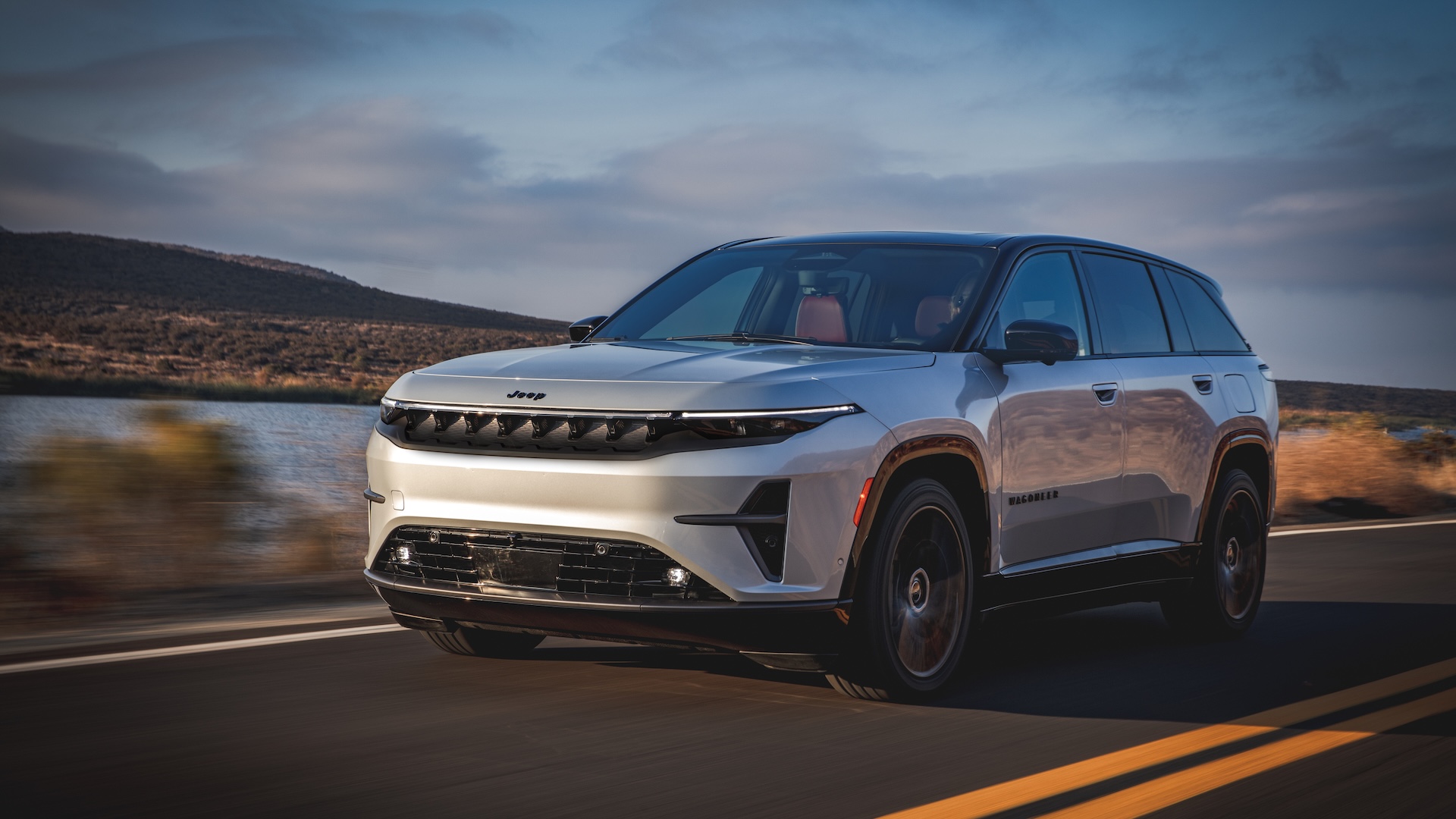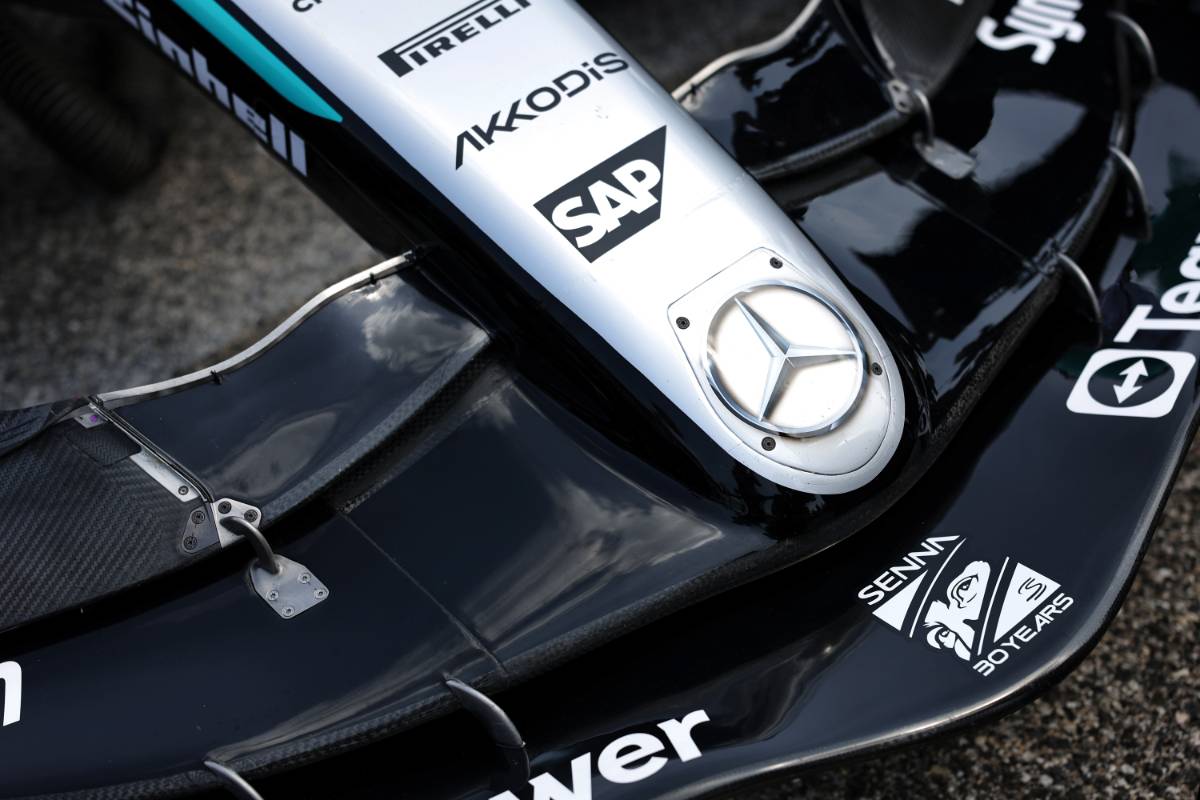2024 Jeep Wagoneer S First Drive Review: S Stands for Street, S Stands for Satisfactory
In this 600-hp Launch Edition trim, the S may also stand for Silly. The post 2024 Jeep Wagoneer S First Drive Review: S Stands for Street, S Stands for Satisfactory appeared first on The Drive.

We’re only days away from closing the books on the first month of 2025, but we’re not done with 2024 just yet. Last week, Jeep cranked up its time machine and invited several of us back a year to sample the 2024 Wagoneer S, the company’s first all-electric vehicle. After waking to subzero temperatures in southeast Michigan, I was more than amenable to the notion of spending a few days literally anywhere (anywhen?) else. And as it turns out, 2024 looks an awful lot like San Diego.
We’ll spare you a chronology of Jeep’s electrification misadventures; suffice it to say that the Wagoneer S was supposed to arrive last year, along with the Jeep Recon EV, giving the brand two all-electric offerings in the U.S. market. Obviously, that did not materialize. But if you believe in “better late than never,” prepare to spend the rest of the year on Stellantis Standard Time, because we’re still in the early days of the company’s BEVolution. For Jeep, that begins with the Wagoneer S.

Let’s start with the obvious: The crossover above is smaller than anything we’ve seen with a “Wagoneer” badge on it. What gives? Well, if you’ll recall, “Wagoneer” was originally envisioned as an entire Jeep subbrand, dedicated dealers and all, rather than simply a name for its largest model. That plan was abandoned and the main Wagoneer, Grand and otherwise, even had prices slashed for 2025. To put it mildly, a lot has changed since 2021, but that broader vision explains why the Wagoneer S is nothing like its body-on-frame cousins wearing the same badge.
This bears out on the technical side, too. The Wagoneer S is based on the STLA Large platform, which is the same one used by the new Dodge Charger Daytona. For an equivalent to the three-row ICE Grand Wagoneer, you’d need the (larger still) STLA Frame. As a result, the Wagoneer S is about the size of a Grand Cherokee, both inside and out.

At launch, there’s only one way to spec the 2024 Jeep Wagoneer S: The Launch Edition. And there’s no Grand Cherokee with a powertrain like this. You get a dual-motor setup producing 600 horsepower and 617 lb-ft of torque. Zero to 60 mph comes in just 3.4 seconds—quicker than the Hellcat-powered Grand Cherokee Trackhawk—and it’s backed by a 100.5-kWh battery pack that Jeep says will get you more than 300 miles on a single charge. All-wheel drive is standard, as are Snow and Sand drive modes, but there are no off-roading gimmicks to be found here.
Even taking size out of the equation, the S stands apart entirely from the rest of the Wagoneer lineup. While Jeep’s designers had a mandate to preserve as much of the company’s signature boxiness as possible, the S was penned with an eye toward efficiency. With no need for cooling intakes where Jeep’s traditional seven-slot-grille would reside, the team instead sculpted its form into the S’s nose and backlit it with LEDs, making it a component of the front lightning “signature.”


And then there’s the wing. It was originally pitched by the design team to square off the tapered rear end that helped the Wagoneer S achieve its aerodynamic targets.
Wagoneer S Chief Engineer Alison Rahm’s first impression? “No freakin’ way.”
Eventually, the engineers came around to a design that keeps the air flowing over that slick booty, and the stylists got to square off the Wagoneer’s form with stanchions running almost the full height of the rear glass, creating a dramatic opening between the body and the structural elements of the wing itself.

So it looks the part at least, but we can’t remember the last time we were invited to a Jeep event that didn’t at least nod toward a trailhead or obstacle course. But none was to be found. The “S” may as well stand for “Street.” By those standards alone, the Wagoneer S Launch Edition is about the least Jeep-y Jeep to ever Jeep. The off-road hijinks will just have to wait for the Trailhawk, which Jeep teased last year.
Behind the wheel, the Wagoneer S feels remarkably … familiar? The interior is attractive but conventional, to the point of being almost defiantly present, as opposed to the airy, open-concept designs we’ve seen in other dedicated EV cabins. This is at least somewhat deliberate, Jeep’s engineers and marketers both confirmed. The Wagoneer S was designed from the ground up to capture Jeep people first. Jeep Senior VP Bob Broderdorf harbors no illusions of chasing true “early adopters” in the EV space with the Wagoneer S; that window has long since closed.

In practical terms, that means we get familiar and intuitive cabin controls. Buttons and rockers and knobs, if you can believe it. There’s no shortage of LED-powered real estate, mind you, but you won’t spend your life hunting and pecking for options. Jeep’s excellent Uconnect 5 system comes with a standard 12.3-inch center screen and 12.3-inch cluster display. Both look sharp and offer the same great UI and excellent response we’ve come to expect from the suite. I noted one persistent glitch that caused intermittent pixelation of the instrument cluster while displaying a navigation route, but it never led to anything more severe.
Underway, the Wagoneer S is steady and composed. The lack of an ICE powertrain invites road and wind noise into the cabin, but neither seemed inclined to intrude, and even the muscular wind gusts in the hills above San Diego failed to shove its nose off-line. If you want things to get weird in the Wagoneer S, you must take matters into your own hands.

That’s best accomplished by flipping the drive mode over to Sport, which disables traction control, stiffens the steering and commands the most aggressive of the Wagoneer S’s available throttle maps. There’s no elaborate stance-dance or menu-dive necessary. Just tap the selector, mash the right hinge and hold on tight as the big EV lights a brief four-tire fire before catapulting itself at the horizon—a somewhat uncharacteristically dramatic display for such an otherwise buttoned up machine. Our frequent giggle-inducing antics cost us dearly; against Jeep’s estimate of more than 300 miles on a charge, we’d have been lucky to break 200.
The MacPherson struts up front and multilink setup out back both soak up imperfections and endow the Wagoneer S with commendably sharp reflexes. This is not a sporting vehicle, but nonetheless Jeep made sure that our route included some decent mountain roads. The S comported itself admirably, diving and rolling compliantly but predictably on turn-in and grabbing eagerly but judiciously as we accelerated out of tight switchbacks. Again, we couldn’t shake the notion that we were driving a Grand Cherokee, and the Wagoneer S lacks the former’s sublime adaptive suspension.



Curiosity piqued, we had to take a closer look at the Wagoneer’s spec sheet, which revealed a welcome surprise. It’s no wonder that it doesn’t feel ponderous; the Wagoneer S is only about 300 pounds heavier than the GC Trackhawk was. We rarely bat an eye when a gasoline-powered truck or SUV gains that much weight between generations, let alone going from ICE to BEV. Trivial. And remember, this is the heaviest, fastest, most comprehensively equipped version of the Wagoneer S, not some stripped-out base model.
Performance like that isn’t free, of course, and Jeep has amplified that somewhat with its single-model launch strategy. At $71,995, the Wagoneer S Launch Edition is meant to represent the pinnacle of the nameplate. It comes so loaded that apart from your exterior finish selection, you’re left with only two choices to make: Do you want the Radar Red interior (pictured) and/or the tow package? The latter is good for 3,400 pounds of trailering (Grand Cherokee can manage 6,200—the electric Wagoneer’s most glaring deficiency).



Jeep’s primary bogeys for the Wagoneer S are the Tesla Model Y and the Cadillac Lyriq, both of which are offered in variants that cost at least $10,000 less, which makes it tricky to compare anything straight off the bat. Jeep will address that with the 2025 Wagoneer S, which will be in production by the time you read this. Over the course of the year, Jeep will roll out new trims beneath the top-tier Launch Edition, each with correspondingly lower price points, but for now, Jeep wants to give the 2024 model some room to breathe. We’ll learn about Jeep’s plans for 2025 at the Chicago Auto Show in February.
For now, don’t get bogged down with the nameplate. The 2024 Jeep Wagoneer S is an electric Grand Cherokee in disguise, with all the benefits and baggage associated therewith. If you want your EV to make some sort of statement, this probably isn’t the choice for you. If you’d like to make the switch to electric with minimal reprogramming of your muscle memory, the Wagoneer S should be on your shopping list, but we’d suggest you wait a month and see what else Jeep has in store for 2025 before pulling the trigger.
| 2024 Jeep Wagoneer S Launch Edition Specs | |
|---|---|
| Base Price | $71,995 |
| Powertrain | dual motor all-wheel drive | 100.5-kWh battery (93.9 kWh usable) |
| Horsepower | 600 |
| Torque | 617 lb-ft |
| Seating Capacity | 5 |
| Cargo Volume | 30.6 cubic feet behind second row | 61.0 cubic feet behind first row | 3 cubic feet in frunk |
| Curb Weight | 5,667 pounds |
| 0-60 mph | 3.4 seconds |
| Top Speed | 124 mph |
| Towing Capacity | 3,400 pounds |
| Off-Road Angles | 19.2° approach | 14° breakover | 23.4° departure |
| Ground Clearance | 6.4 inches |
| EPA Range | Over 300 miles (est.) |
| Quick Take | An all-electric Grand Cherokee in disguise, the Wagoneer S defies both its nameplate and electrification norms. Now we just need one that isn’t silly fast (or silly expensive). |
| Score | 7.5/10 |





Got tips? Send ’em to tips@thedrive.com
The post 2024 Jeep Wagoneer S First Drive Review: S Stands for Street, S Stands for Satisfactory appeared first on The Drive.






























.png)





















![‘Companion’ Ending Breakdown: Director Drew Hancock Tells All About the Film’s Showdown and Potential Sequel: ‘That’s the Future I Want for [Spoiler]’](https://variety.com/wp-content/uploads/2025/02/MCDCOMP_WB028.jpg?#)
























